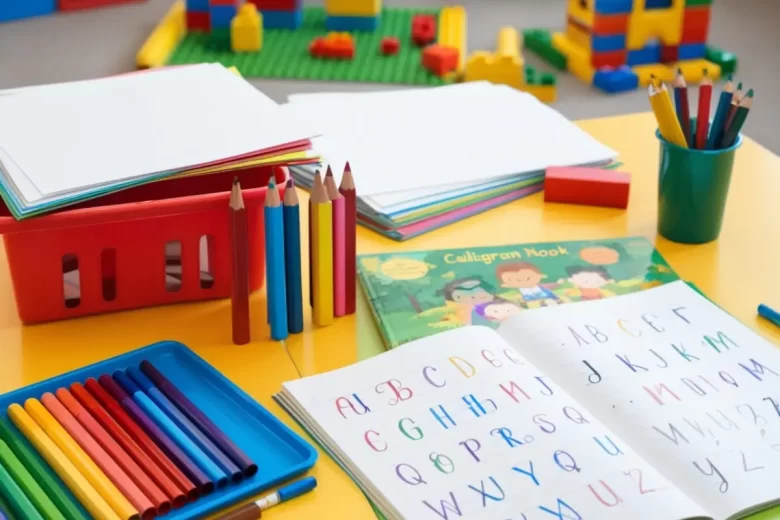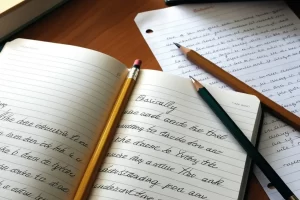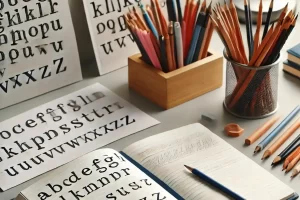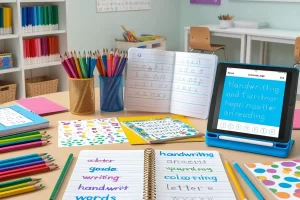Handwriting plays a fundamental role in early childhood development, particularly in motor skills. By engaging in manual writing, children strengthen fine motor coordination, essential for activities such as gripping, drawing, and even buttoning clothes. This process enhances cognitive connections, reinforcing both learning and physical dexterity.
Unlike digital typing, handwriting requires controlled hand movements, stimulating neural pathways related to memory and comprehension. This manual activity not only improves letter recognition but also aids in developing structured thinking. When children practice consistent letter formation, they build muscle memory, which facilitates smoother writing progress.
By incorporating structured writing exercises, educators and parents can support a child’s motor and cognitive growth. Engaging activities focused on letter tracing and freehand writing foster better handwriting skills, allowing children to express their thoughts more effectively. Encouraging these exercises in early education contributes to a well-rounded learning experience.
The Role of Handwriting in Fine Motor Development
Strengthening Finger Muscles
Practicing handwriting helps children refine finger strength, essential for gripping pencils and other tools. By repeatedly tracing and forming letters, they develop dexterity, which translates into improved precision in everyday tasks like tying shoelaces or cutting paper.
Enhancing Coordination and Control
Handwriting requires precise coordination between fingers, hands, and eyes. This process strengthens hand-eye coordination, allowing children to execute more controlled movements. Over time, these skills contribute to better handwriting fluency and readability.
Encouraging Consistency and Endurance
Through structured practice, children build endurance in their hand muscles, enabling them to write for longer periods without fatigue. Developing writing stamina ensures smoother transitions to advanced literacy activities, preparing them for academic success.
Writing Activities to Develop Motor Skills
Tracing Letters and Shapes
Tracing exercises help children familiarize themselves with letter forms and stroke patterns. By guiding their hands along pre-drawn letters or shapes, they develop muscle memory, reinforcing proper writing habits from an early age.
Freehand Drawing and Letter Formation
Encouraging children to draw freely and form letters without tracing strengthens independent writing abilities. This activity fosters creativity while allowing them to experiment with shapes, sizes, and spacing, improving overall control.
Using Sensory Writing Techniques
Introducing textured surfaces, such as sandpaper or finger painting, adds a sensory dimension to writing. These activities engage multiple senses, making learning more interactive and memorable while reinforcing fine motor coordination.
Practical Tips for Parents and Educators
Creating a Supportive Writing Environment
Providing comfortable seating, proper lighting, and accessible writing tools encourages children to practice handwriting regularly. A well-structured environment minimizes distractions, allowing them to focus on refining their skills.
Incorporating Writing into Daily Activities
Integrating handwriting into everyday tasks, such as writing grocery lists or labeling drawings, makes practice enjoyable and relevant. Encouraging children to write informally builds confidence and reinforces their motor skills naturally.
Offering Positive Reinforcement
Praising efforts and progress in handwriting boosts a child’s motivation. Constructive feedback helps them refine their skills while fostering a positive attitude toward writing, ensuring continuous improvement.
Final Considerations
Handwriting serves as a foundational skill that enhances fine motor development and cognitive growth. Through structured activities, children build strength, coordination, and control, essential for literacy advancement. Encouraging consistent practice in early education establishes a strong foundation for future learning.
Engaging exercises like tracing, freehand drawing, and sensory writing contribute to improved dexterity and letter formation. By integrating writing into daily routines, parents and educators create an enriching learning environment that nurtures writing proficiency.
Supporting children in developing handwriting skills not only benefits their academic journey but also strengthens essential motor functions. Investing time in handwriting practice fosters lifelong skills, empowering children to communicate effectively and confidently.




